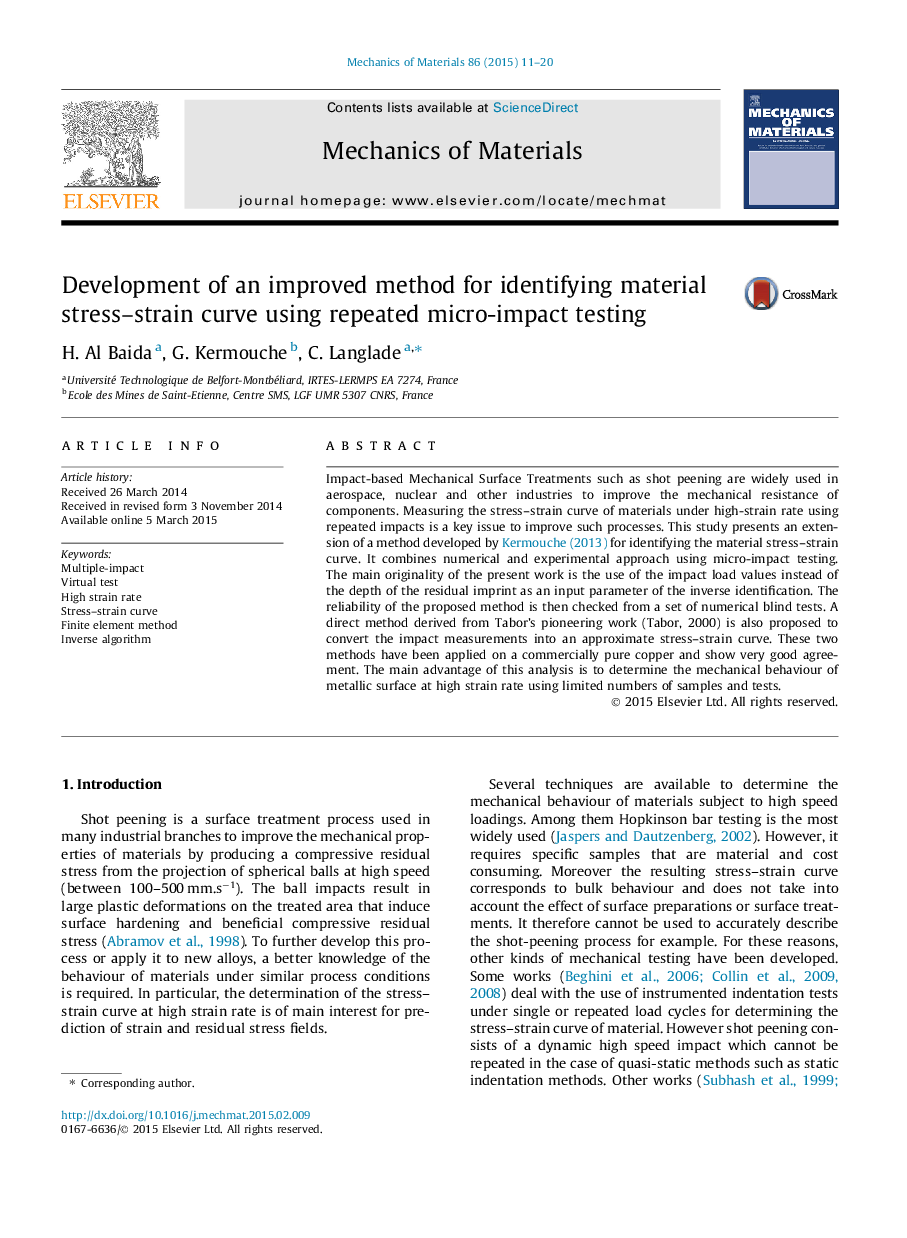| Article ID | Journal | Published Year | Pages | File Type |
|---|---|---|---|---|
| 799596 | Mechanics of Materials | 2015 | 10 Pages |
•Identification of the mechanical behaviour of metallic surface at high strain rate using repeated impact.•Determination of the material stress–strain curve from simple experimental load and scar radius measurements.•Application on real materials in particular pure copper.
Impact-based Mechanical Surface Treatments such as shot peening are widely used in aerospace, nuclear and other industries to improve the mechanical resistance of components. Measuring the stress–strain curve of materials under high-strain rate using repeated impacts is a key issue to improve such processes. This study presents an extension of a method developed by Kermouche (2013) for identifying the material stress–strain curve. It combines numerical and experimental approach using micro-impact testing. The main originality of the present work is the use of the impact load values instead of the depth of the residual imprint as an input parameter of the inverse identification. The reliability of the proposed method is then checked from a set of numerical blind tests. A direct method derived from Tabor’s pioneering work (Tabor, 2000) is also proposed to convert the impact measurements into an approximate stress–strain curve. These two methods have been applied on a commercially pure copper and show very good agreement. The main advantage of this analysis is to determine the mechanical behaviour of metallic surface at high strain rate using limited numbers of samples and tests.
Graphical abstractFigure optionsDownload full-size imageDownload as PowerPoint slide
